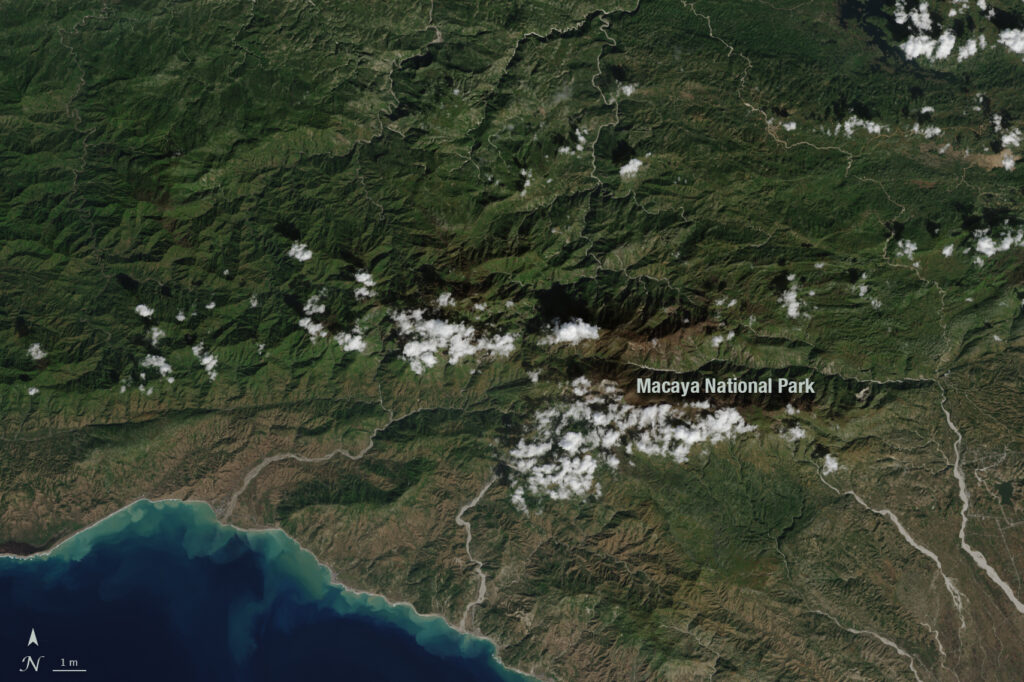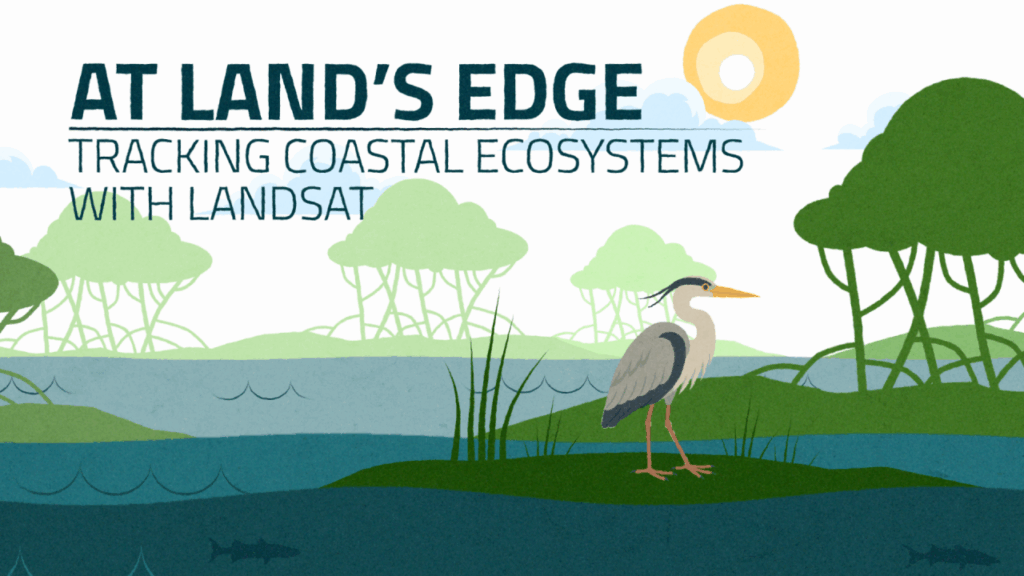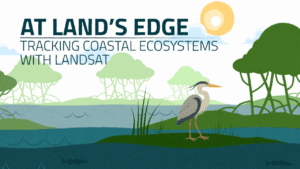
By Madeleine Gregory
Haiti lost nearly half of its primary—often called old-growth—forests between 1996 and 2022, according to a new study published in Remote Sensing of Environment that analyzed nearly 30 years of Landsat imagery. The Dominican Republic, which shares an island with Haiti, lost around 20.5% of its primary forest during the same period. The main drivers of forest loss were fire, tree-cutting, and hurricanes, accounting for 65.7%, 20.9%, and 9.0% of the primary forest loss on the island, respectively.
In this study, research led by a team from the Global Environmental Remote Sensing (GERS) Laboratory (Falu Hong, PhD candidate; Ji Won Suh, Postdoctoral Researcher; Shi Qiu, Research Assistant Professor; and Zhe Zhu, GERS Laboratory director) at the University of Connecticut used a dense time series of Landsat data to distinguish between primary and secondary forest in Hispaniola, the island divided between Haiti and the Dominican Republic. Using on-the-ground information about primary forests distribution from collaborators in Hispaniola, they trained a machine learning model to identify spectral differences between primary and secondary forests. They found that multiple spectral differences in the Landsat bands, especially shortwave infrared band, that allowed them to classify forests as either primary or secondary. Then, they used a Landsat time series from 1996 to 2022 to track disturbance over time and changes to forest structure. They linked those disturbances to specific drivers; for example, burn scars indicated that a disturbance was caused by fire, while hurricane paths were available from NOAA.
Typically, scientists monitoring forest change using optical satellite imagery are looking at whether tree cover increases or decreases over a time period. However, this method doesn’t tell you about the kind of forest you’re losing. Primary forests are defined in a 2020 report from the U.N. Food and Agriculture Organization as “naturally regenerated forest of native tree species, where there are no clearly visible indications of human activities and the ecological processes are not significantly disturbed.”
This gif of forest change in Macaya National Park shows the impact of Hurricane Matthew and the 2021 earthquakes on primary forest distribution. Credit: University of Connecticut/Falu Hong
“We found that with Landsat, using the spectral information and the time series information, we can tell the difference between the primary and secondary forest,” said Falu Hong, lead author on the study.
Primary forests are critical for supporting life on Earth. They store carbon in their trunks, provide habitat for many species, and are often more resilient to disturbance than younger forests. If a region loses primary forest, that has an impact on the broader ecosystem health—even if secondary forest regrows to take its place.
In Hispaniola, primary forest loss was widespread even within protected areas. This could be because some of the major drivers of forest loss—fires, hurricanes, and landslides as a result of an earthquake—are forces that humans cannot completely control or manage. Most of the primary forest loss in Haiti’s Macaya National Park, for example, happened in 2016 as a result of Hurricane Matthew.
Human encroachment does make forests more vulnerable to degradation, however, which is why there was a significant difference in the primary forest loss in Haiti and the Dominican Republic. Though the two countries are subject to the same climate conditions, Haiti’s forests tend to be more highly fragmented, meaning that they are more vulnerable to damage by storms, wind, and other forces. Over half of Haiti’s land surface is covered with barren, abandoned agricultural land, likely a legacy of intense agricultural use and deforestation in the 20th century. A 2018 study published in PNAS, three authors of which are co-authors on this study, such as S. Blair Hedges from Temple University and Zhiqiang Yang from U.S. Forest Service, found that Haiti only had 1% of its original primary forest. As one of the most deforested countries in the world, the island nation is losing—and has already lost—many endemic species.
The researchers did find that the remaining primary forests were resilient to certain disturbances, such as mild droughts. The researchers defined resilience as recovering fully within one year after the disturbance. After analyzing the effectiveness of a range of vegetation indices, they settled on Normalized Burn Ratio (NBR) to monitor recovery. If the difference in NBR in a primary forest was less than 0.05 before and after a disturbance, it remained classified as primary. If it changed by more than that, it was classified as secondary.
Hong emphasized that this was a pilot study to show the capacity of Landsat time series to identify the difference between primary and secondary forests. Next, he said the team is working to analyze what these losses mean for the species that call these forests home in Hispaniola. He also wants to expand the research to the rest of the Caribbean—including Cuba, Jamaica, and Puerto Rico—and then to other regions. Eventually, he said they want to do a similar analysis for all global lands. Future research could integrate LiDAR data about forest height and structure as well as information about forest age to improve the model accuracy.
“Landsat is global. It’s long term,” said Hong. “We can do this on a large scale and get a standard way to deliver this primary forest information to other communities.”





